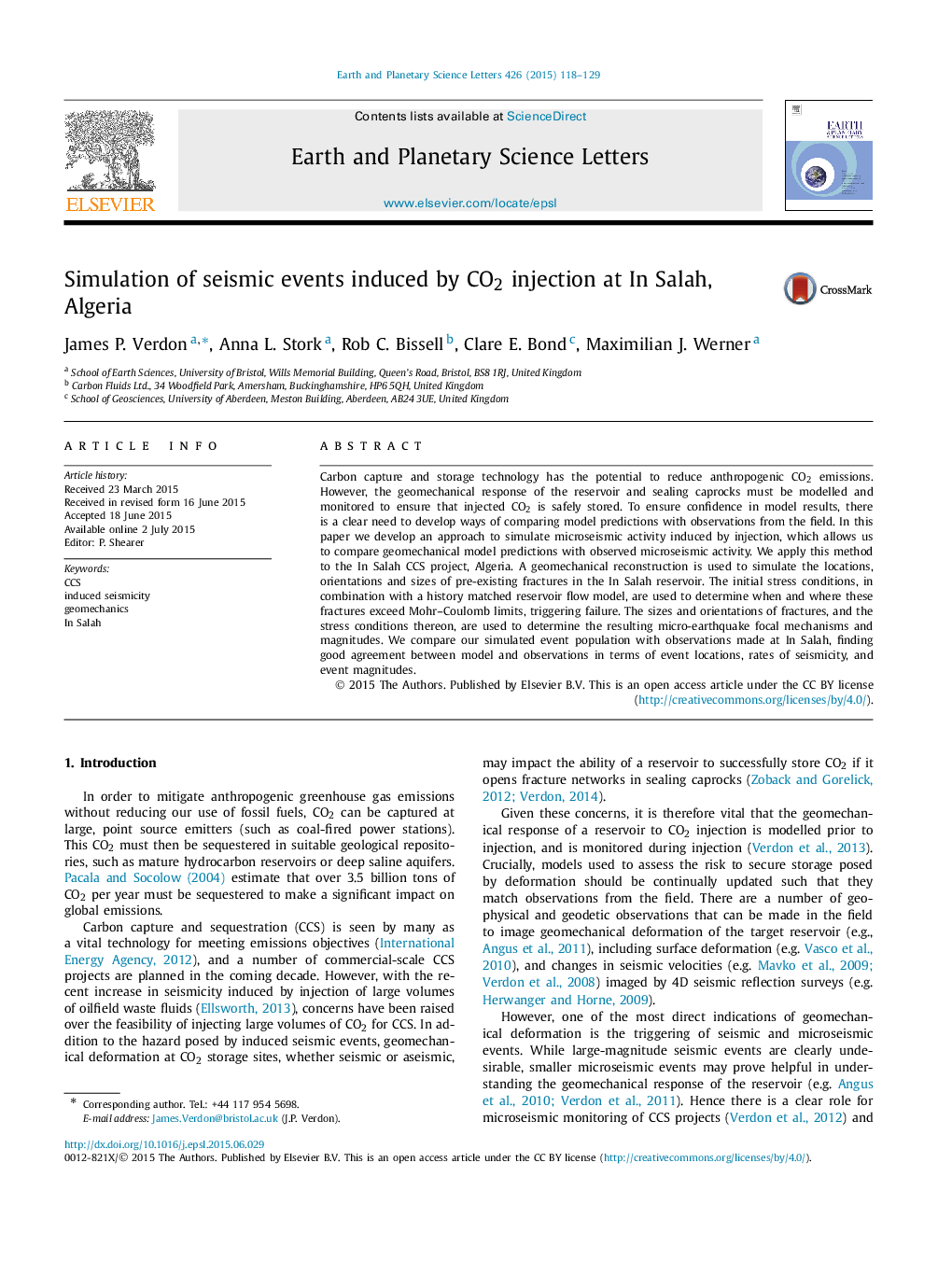| Article ID | Journal | Published Year | Pages | File Type |
|---|---|---|---|---|
| 6428124 | Earth and Planetary Science Letters | 2015 | 12 Pages |
â¢Fracture models are combined with reservoir simulations to model microseismicity.â¢We use this approach to simulate microseismicity at the In Salah CCS project.â¢We find a good match between model prediction and field observations.
Carbon capture and storage technology has the potential to reduce anthropogenic CO2 emissions. However, the geomechanical response of the reservoir and sealing caprocks must be modelled and monitored to ensure that injected CO2 is safely stored. To ensure confidence in model results, there is a clear need to develop ways of comparing model predictions with observations from the field. In this paper we develop an approach to simulate microseismic activity induced by injection, which allows us to compare geomechanical model predictions with observed microseismic activity. We apply this method to the In Salah CCS project, Algeria. A geomechanical reconstruction is used to simulate the locations, orientations and sizes of pre-existing fractures in the In Salah reservoir. The initial stress conditions, in combination with a history matched reservoir flow model, are used to determine when and where these fractures exceed Mohr-Coulomb limits, triggering failure. The sizes and orientations of fractures, and the stress conditions thereon, are used to determine the resulting micro-earthquake focal mechanisms and magnitudes. We compare our simulated event population with observations made at In Salah, finding good agreement between model and observations in terms of event locations, rates of seismicity, and event magnitudes.
